Algebra KS3 – Best worksheets & questions for Years 7, 8 and 9
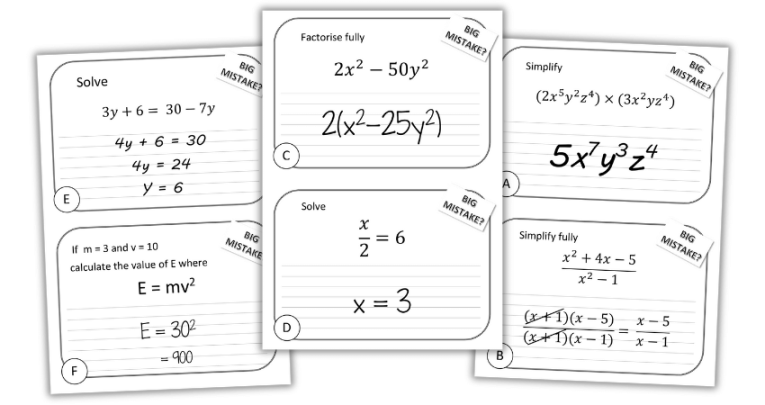
Looking for free KS3 algebra resources? Explore this collection of worksheets, lesson plans and activities to support effective teaching and learning…

- by Teachwire
- Classroom expertise and free resources for teachers

Discover a treasure trove of free KS3 algebra worksheets, lesson plans, and activities designed to make learning algebra engaging and accessible for students and teachers alike.
(If you’re looking for algebra games, we’ve also got you covered.)
Jump to a section:
KS3 algebra worksheets
Correcting errors in linear simultaneous equations
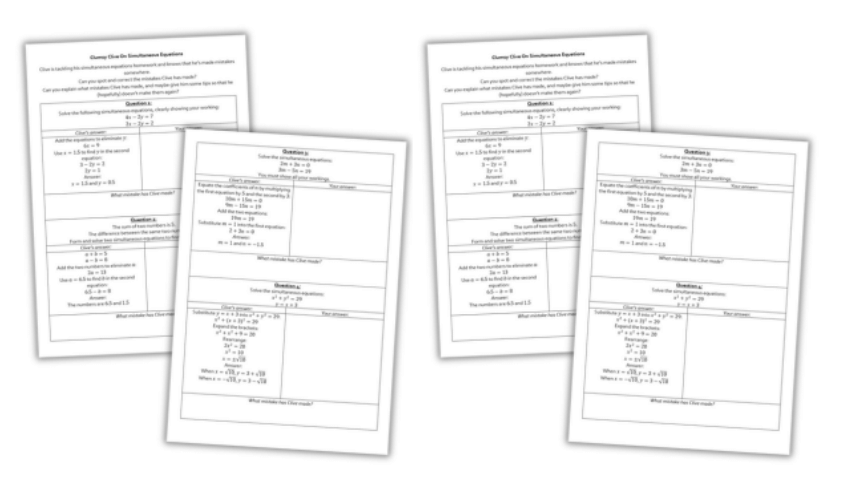
Clumsy Clive, despite his best efforts, finds himself in a pickle with his linear simultaneous equations homework. The purpose of this linear simultaneous equations exercise is to spot and correct the common mistakes that Clive, and perhaps many students like him, tend to make.
Finding the nth term
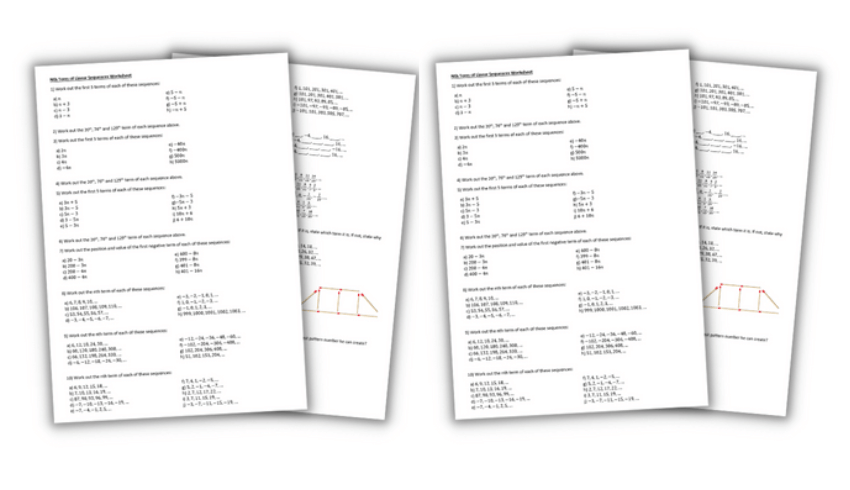
This nth term questions worksheet starts with simple sequences based on a single n. Next we introduce multiples of n, then linear transformations of n. Later questions bring in some opportunities to develop reasoning.
Expanding brackets
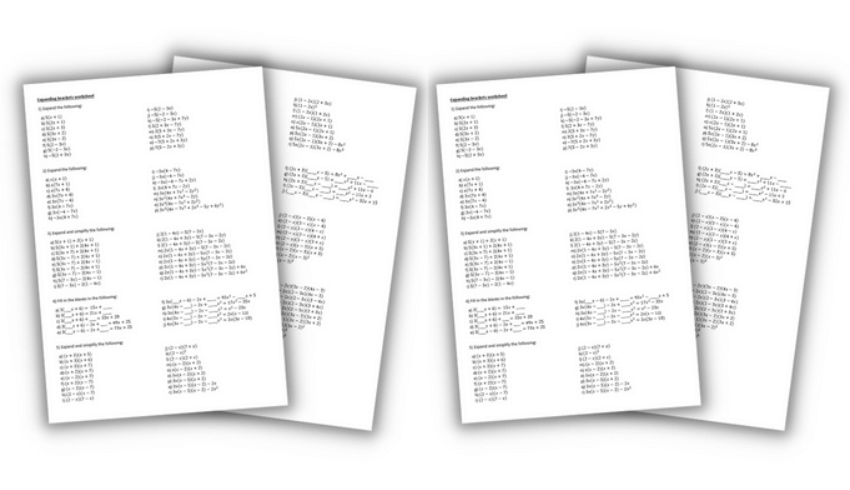
The practice questions on this expanding brackets worksheet have been designed to allow your pupils to try all important aspects of the content, but also to notice things about the structure behind each content area.
Factorising and simplifying
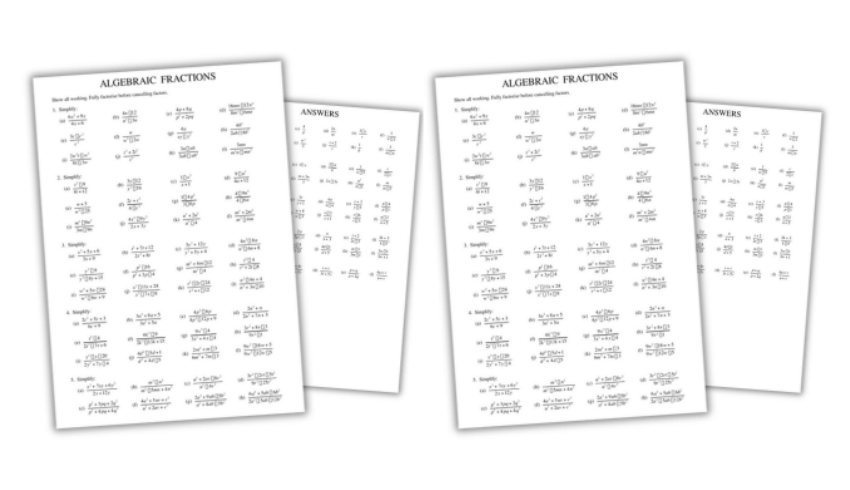
This free algebraic fractions worksheet with answers asks students to factorise, then simplify algebraic fractions. There are 56 questions for students to have a go at.
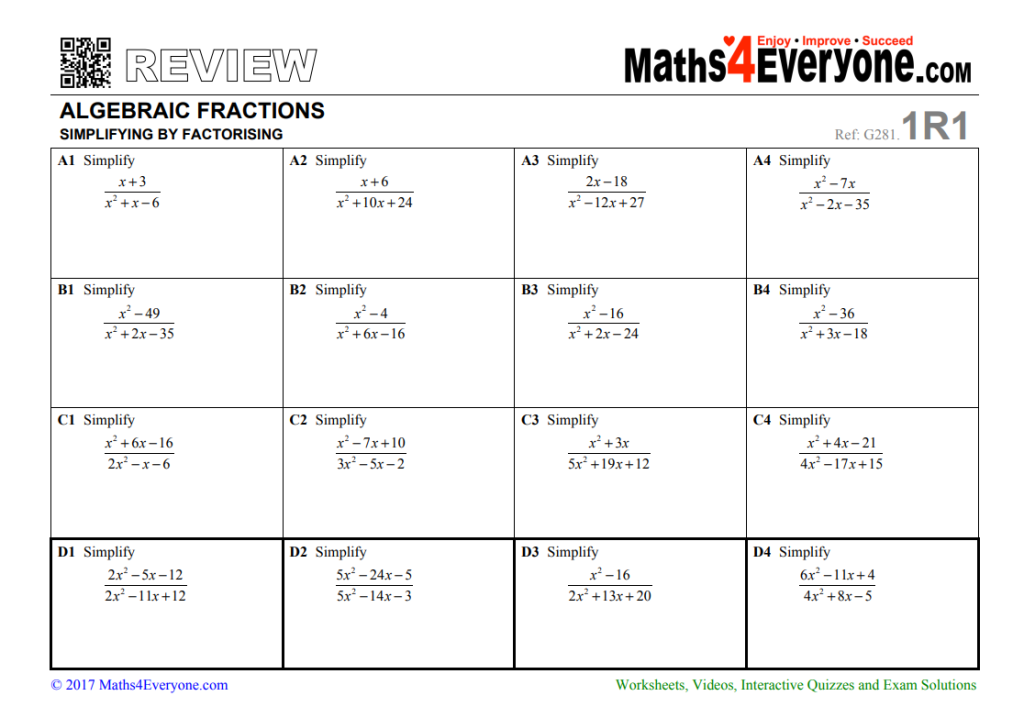
We also have another algebraic fractions worksheet that contains the full range of exam-type questions that require students to simplify algebraic fractions by factorising.
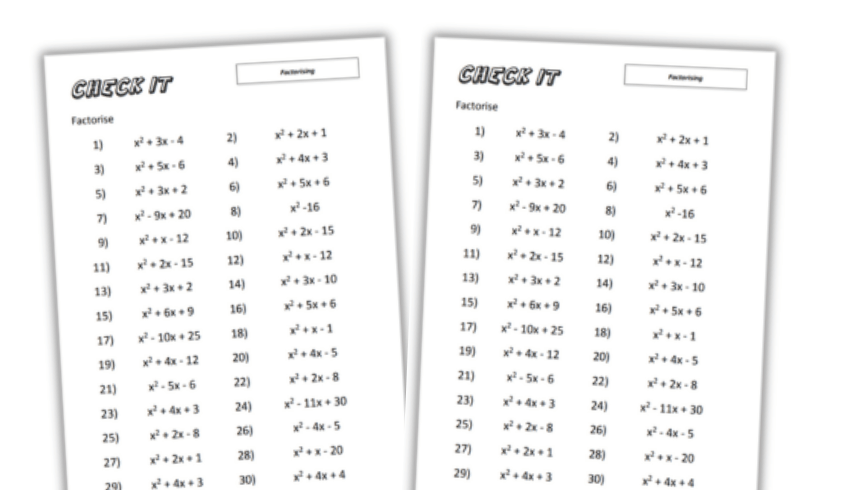
This factorising worksheet is an invaluable resource for students seeking to reinforce their algebraic skills. With a total of 30 questions, accompanied by solutions, it offers ample opportunities for rote practice.
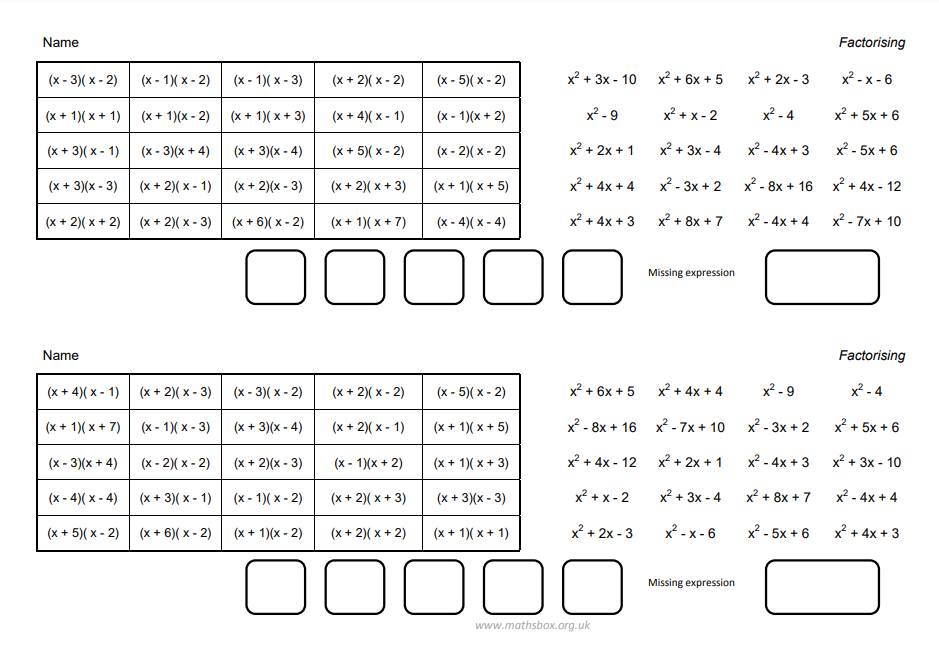
This 20-question settler activity involves factorising 20 expressions, shading in answers on the provided grid. When they have finished, there will be five unshaded answers to be transferred to the boxes at the bottom of the sheet.
Formula worksheet
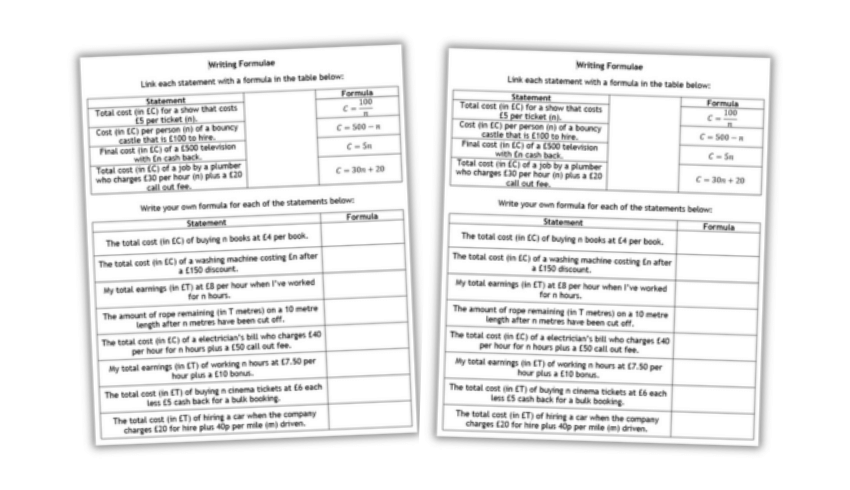
This KS3 maths formula sheet first asks students to link each statement with a formula in the given table. They then move on to part two. This involves writing your own formula for each of the given statements.
KS3 algebra lesson plans
Algebra murder mystery
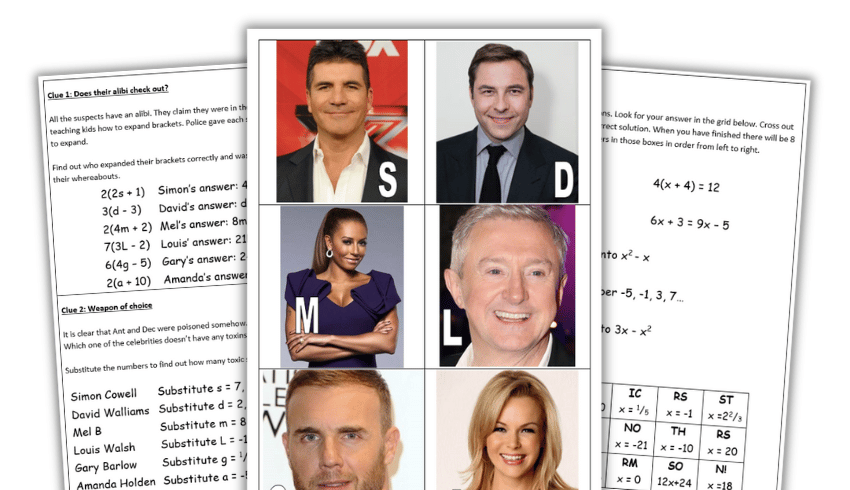
This algebra murder mystery is a great revision task. Use it with a whole class to cover key algebra topics. This includes expanding single brackets, substitution, nth term and solving equations.
Simplifying algebraic expressions without boring drills
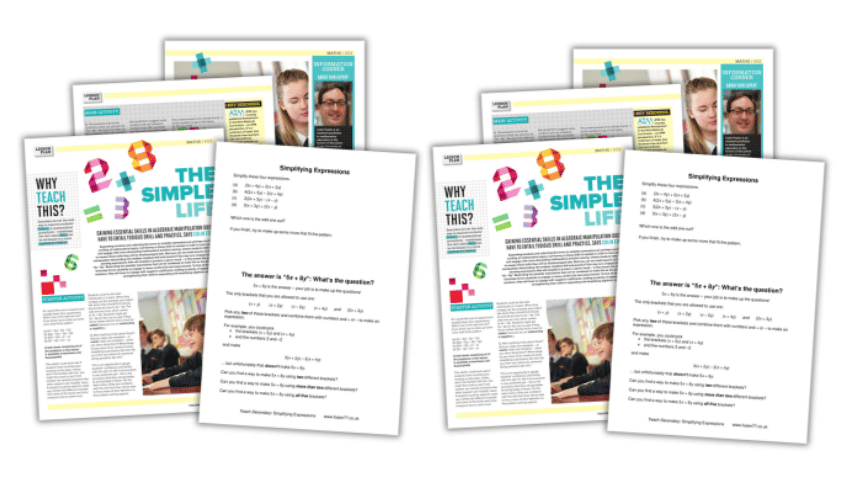
This free simplifying algebraic expressions lesson plan for KS3 comes with an accompanying task sheet. Avoid mindless drill by engaging students in devising expressions that will simplify to produce a given result – in this lesson, the expression ‘5x + 8y’.
Integer problem lesson plan
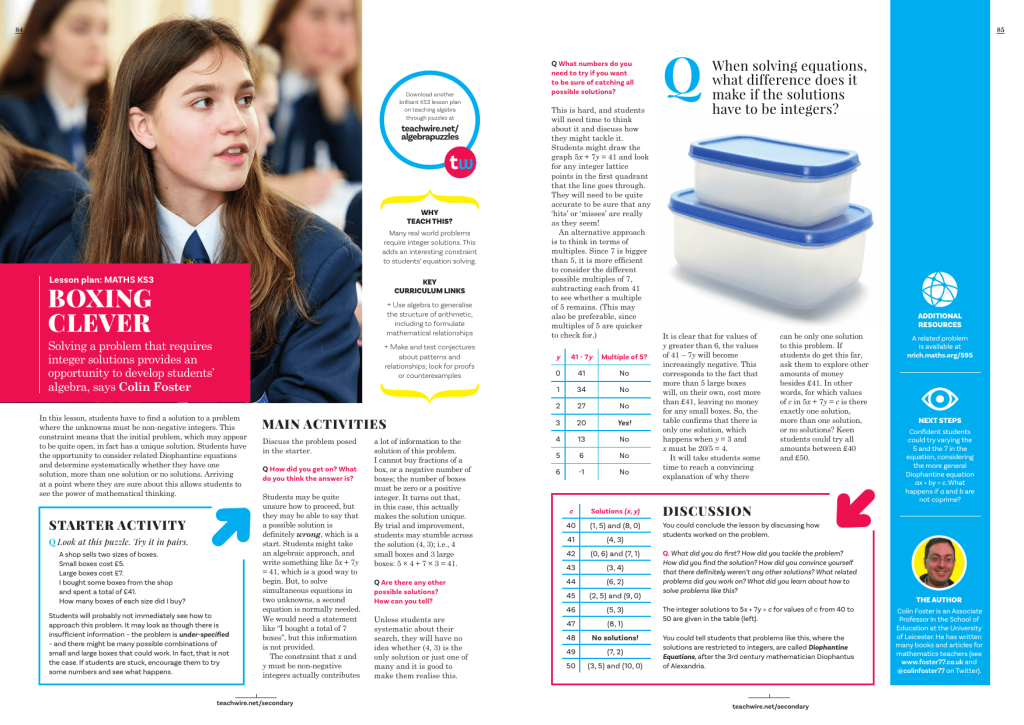
In this lesson, students have to find a solution to a problem where the unknowns must be non-negative integers. This constraint means that the initial problem, which may appear to be quite open, in fact has a unique solution.
Rearranging equations confidently
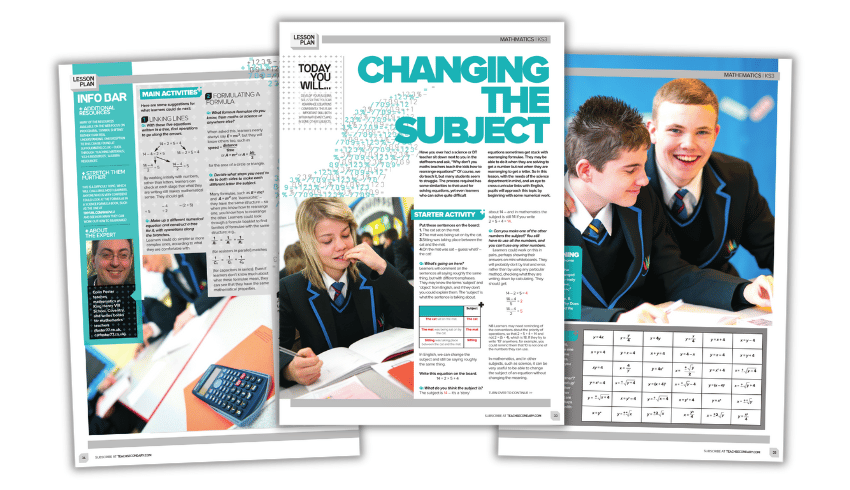
This maths lesson plan by Colin Foster develops pupils’ algebra skills so that they can rearrange equations confidently, which is an important skill both in mathematics and other subjects like science and design and technology.
Expanding brackets
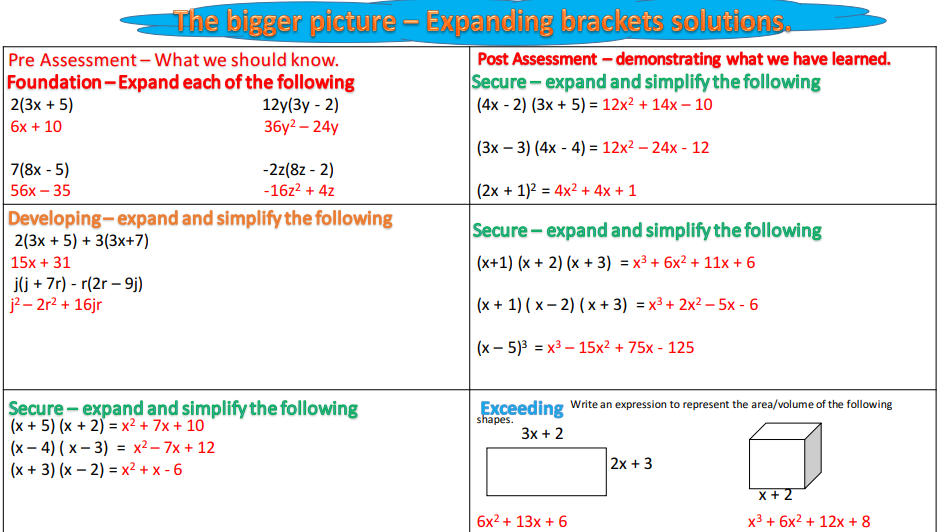
Pre-assess students’ ability to expand brackets, and then introduce questions for those who are secure, developing or exceeding expectations. By the end of this algebra lesson, students will have developed a better understanding of the bigger mathematical picture.
Simultaneous equations and graphs
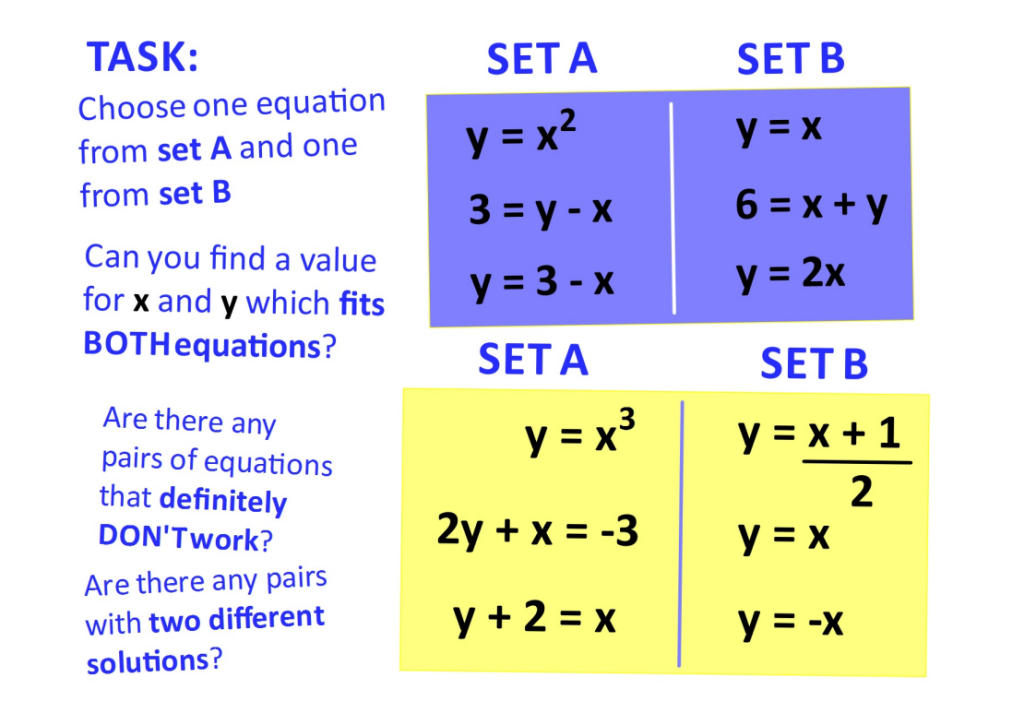
This full lesson introduces solving simultaneous equations using graphical methods. The starter is a kinaesthetic activity where pupils order themselves according to the value of the expressions they are holding.
KS3 algebra activities
Mega revision PowerPoint
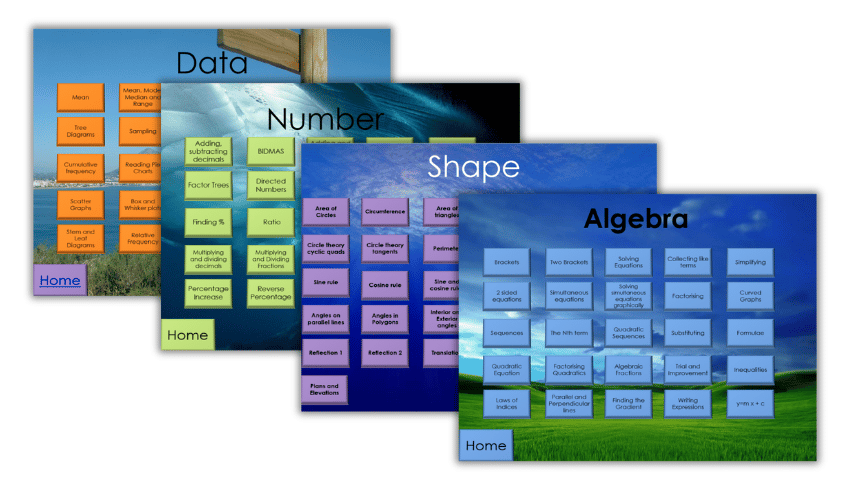
This mega KS3 maths questions PowerPoint features slides of questions on a range of topics, including lots of KS3 algebra questions. Answers are included.
Spot the mistakes
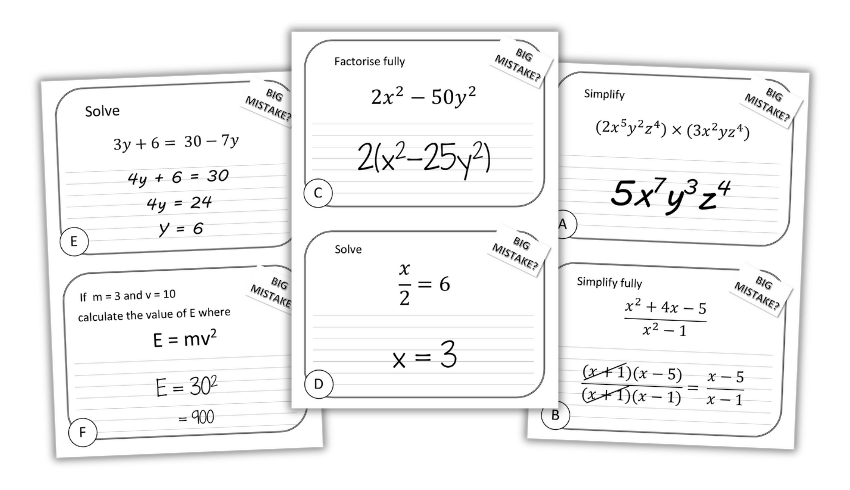
This group activity is designed for mixed algebra revision on factorising equations. Each card has a question and solution. Unfortunately, the solution may contain a classic mistake. The students need to identify the mistake and provide a correct solution.
Treasure hunt KS3 algebra activity
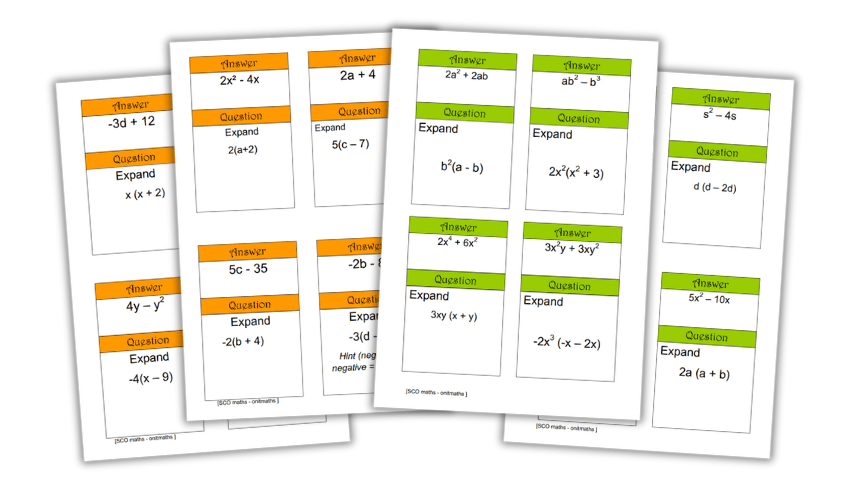
This is a resource designed to help pupils practise expanding a single bracket. It’s intended for pupils in Year 7, after introducing expanding brackets as a main task.
Differentiated task cards
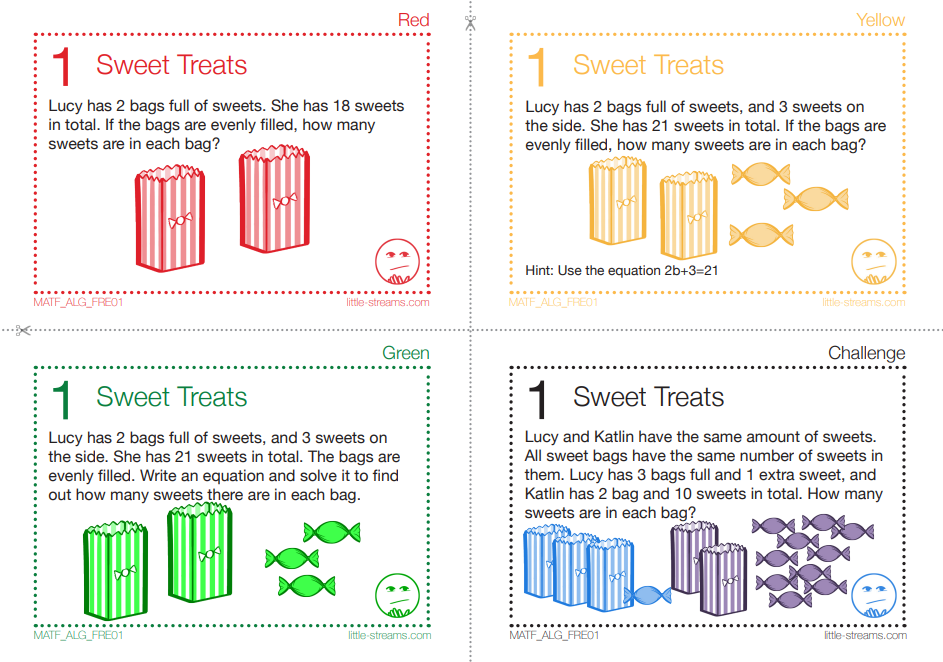
This pack contains eight sets of four algebra-themed question cards, with the cards in each set representing four levels of differentiation.
Each set covers a different algebra topic, ranging from simple real-life situations to nth-term questions and sequences, working with simple algebraic equations and geometry.
Factorising equations PowerPoint
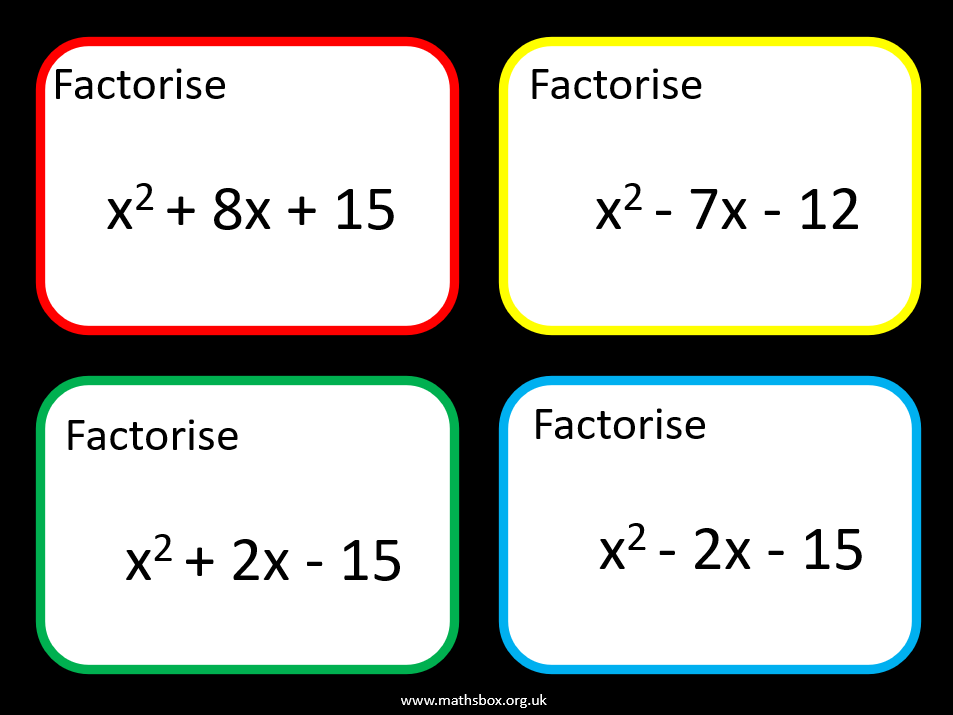
This simple, ready-to-project algebra lesson starter (or plenary) for KS3 and KS4 focuses on factorising equations. There are four different questions to project, with working space and solutions provided.
Linear and quadratic equations
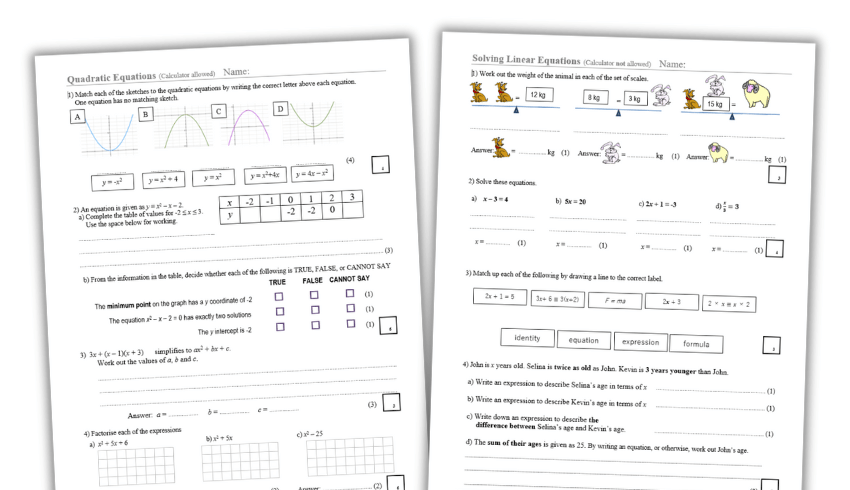
These two resources each contain a four-page worksheet of questions on solving linear and quadratic equations of increasing complexity, and include both a question and answer sheet. Click here for the linear equations and here for the quadratic ones.
Algebraic expressions, collecting terms and solving equations
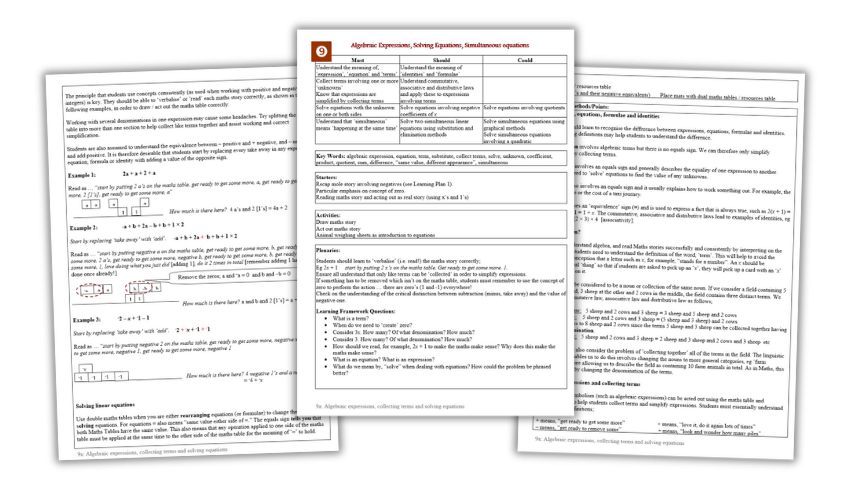
This resource provides teaching pedagogy for algebraic expressions, collecting terms and solving equations. It supports KS3 teachers with the planning and delivery of lessons and includes plenaries and effective teaching techniques.
Algebraic expressions
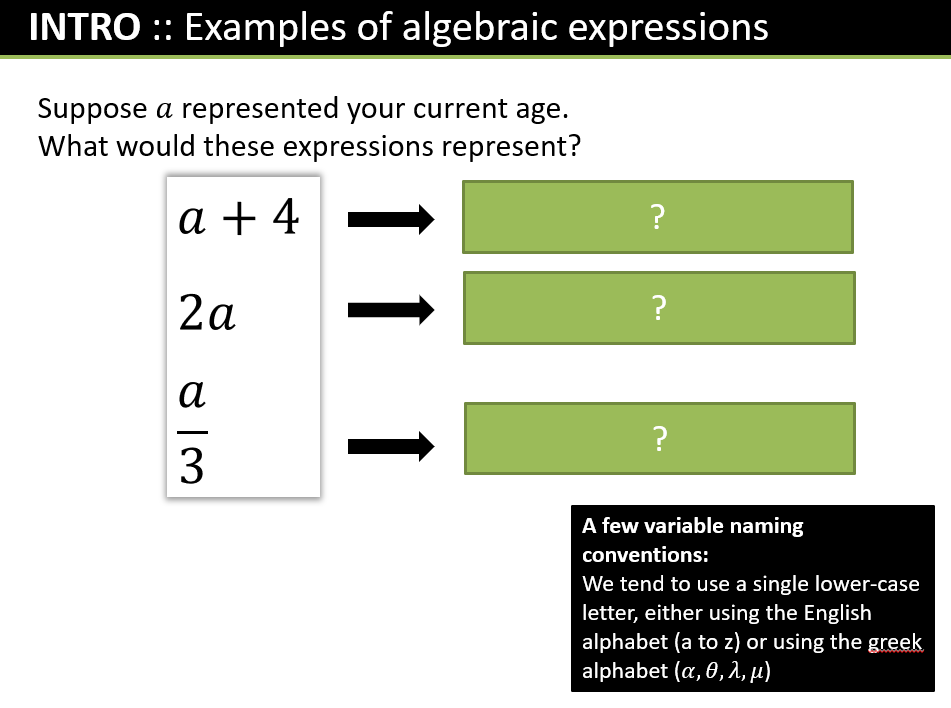
This resource is divided into three sections: forming algebraic expressions from worded information; algebraic notation and simplifying by collecting like terms and multiplying/dividing expressions; substituting values, including negative numbers, into algebraic expressions.
More resources
- Download 100+ problem-solving questions in our KS3 maths worksheets pack from White Rose Maths.
- Download 30+ outstaanding, free maths lesson plans for KS3 and GCSE
- Download a bumper KS3 maths worksheets pack










